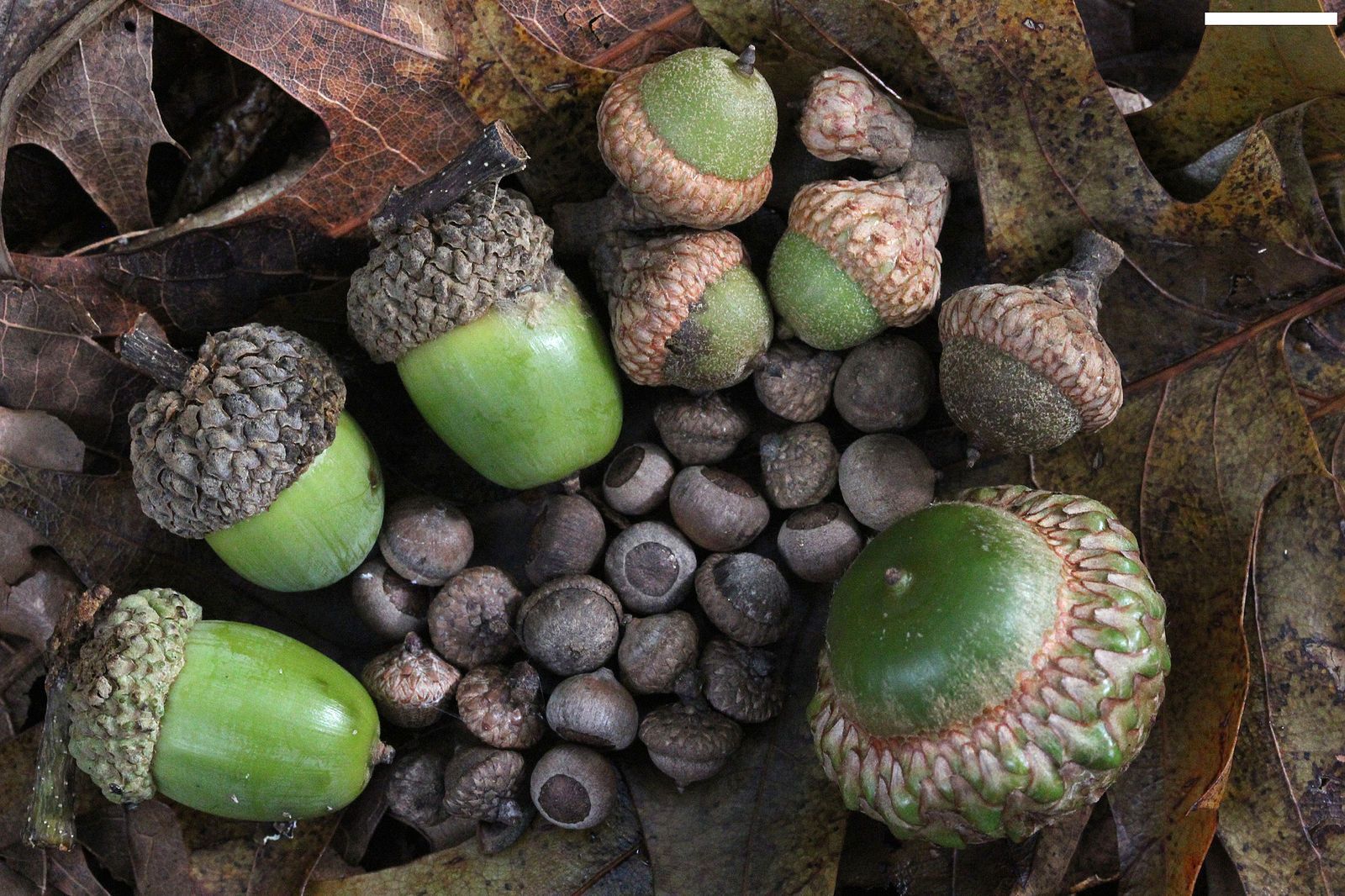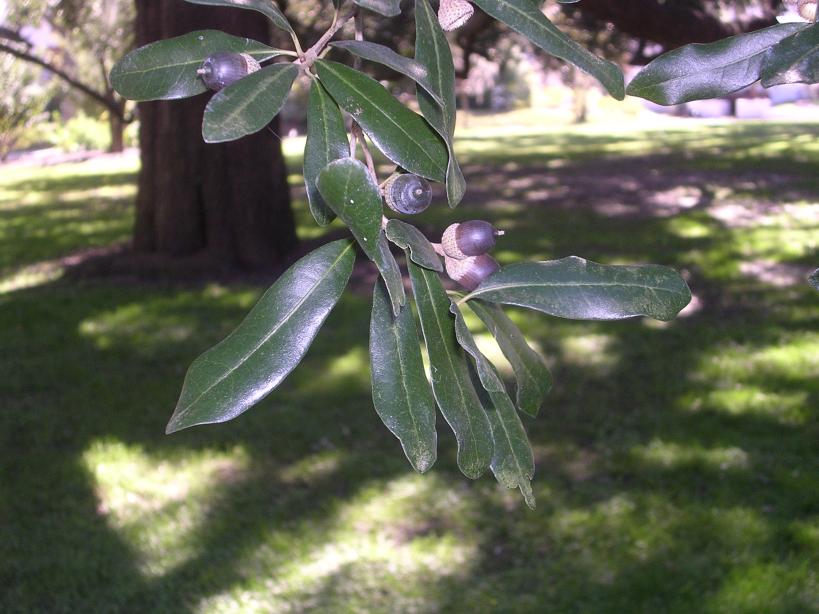
Another Iconic Southern Tree
The acorn, a common sight of the autumn season in temperate climates. For people in eastern North America, but not Florida, the predominant species is the white oak, Quercus alba, a long-lived and hardy species that can produce dozens or hundreds of acorns a year. These nuts are most commonly associated with species that stash them for winter forage, especially the eastern gray squirrel, Sciurus carolinensis.

But, at this point, you might be wondering why I am talking about autumn and winter, when Florida, especially south Florida, is much more tropical and has more of a wet season/dry season pattern rather than a winter/spring/summer/autumn pattern. The reason is because those are the images our minds tend to associate with oaks and acorns, but there’s another surprising species here in Florida
Oaks are trees or shrubs belonging to the genus Quercus. They are native to the northern hemisphere and widely abundant worldwide, with approximately 600 living species. The vast majority of these are deciduous, meaning that their leaves are lost for part of the year. This is done primarily as a way to conserve water during colder months that have less sunlight. However, there are approximately thirty species of oaks that do not undergo this process. They are evergreen or semi-evergreen, keeping the leaves year-round. These are called live oaks.
In Florida, as well as the south Atlantic coast and the Gulf coast, the predominant species of live oak is Quercus virginiana, the southern live oak. It’s easy to overlook this particular tree. It doesn’t look very spectacular and to northern transplants, it doesn’t even look like a proper oak. If not for the acorns, which fall to the ground prolifically in November and December here, it would be easy to forget that it’s even related. Take a look at a white oak leaf, it’s got a very distinctive shape.
Now compare that to a live oak leaf. They don’t look even remotely similar. The acorns are also much more oblong and less round.

Of course, the southern live oak isn’t a true evergreen. Each spring it drops its leaves just before new ones grow in. This can easily give the appearance of being an evergreen, as it only lacks leaves for a brief period of time, but it doesn’t technically count. This particular tree has become an icon of the deep south of the United States. Because the winters are milder here, it doesn’t have to worry as much about the ill effects of keeping its leaves during those months. It can live for hundreds of years and grow to tremendous size. The current largest certified individual of the species can be found in Louisiana with a height of 68 feet and a trunk circumference of almost 39 feet. Estimates put it at approximately 1,500 years old.
In modern times, live oak doesn’t see much human use outside of ornamental landscaping, but this wasn’t always the case. Native Americans would extract cooking oil from the acorns, weave the leaves together for rugs, and use the bark to make dyes. In addition, it saw use in wooden shipbuilding. In fact, European varieties of live oak were greatly reduced in number by the end of the 19th century because of this demand. However, they weren’t used for the actual planks. That was instead reserved for the straight and tall growing red and white oaks. Instead, the natural tendency of live oak to form angles with its trunk and branches made it well suited for a ship’s framework timbers.
Oaks in general are quite dense and Quercus virginiana is one of the densest among the hardwoods of North America. This property gave rise to an interesting small chapter in US history. Some of you are, no doubt, familiar with the wooden-hulled frigate USS Constitution, the oldest commissioned naval vessel still afloat (now anchored in Boston Harbor). During the War of 1812, British cannonballs were seen bouncing off her wooden hull, earning the moniker ‘Old Ironsides’. Much of her materials were oak and the frame was southern live oak harvested from the Georgia coast. The US Navy even procured large strands of live oak for use in shipbuilding. Of course, with the advent of steel-hulled vessels, the commercial demand for the tree has greatly decreased.
Florida has a wide variety of trees, but none are quite so ubiquitous and yet unassuming and overlooked as the live oak. It is native to the entire peninsula (and some of the Keys) and can be found almost anywhere, even in marshes and swamps as part of hardwood hammocks. The easiest way to tell they’re nearby (if it’s the right time of year) is to look at the ground for dozens of their fallen acorns. They’re often planted on the side of parking lots here and you can hear a characteristic crunching sound when you drive over the nuts.
Another story, and another species, if you live in Florida, you likely pass by every day without even noticing. I hope you’ve enjoyed our stroll through the Florida Backyard so far.